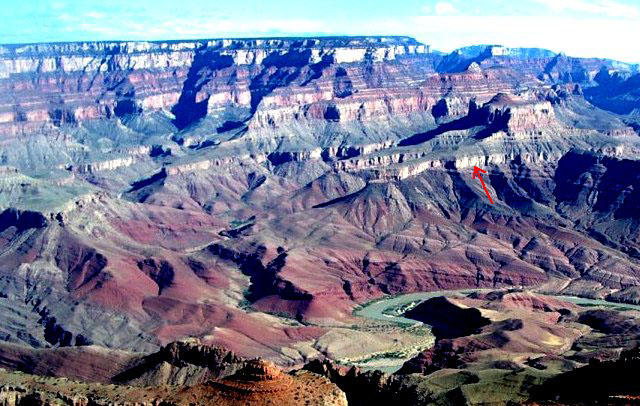1. Geochronology is the study of the age of rocks. According to the geologic time scale, if it was determined that a rock containing fossils was precisely 180 million years old, what geologic time period would that be from?
a. Late Permian
b. Early Triassic
c. Early Jurassic
d.
Late Cretaceous
2. The rock cycle conceptually includes aspects of which of the following:
a. Earth materials may change from one form to another over the passage of geologic time.
b. Igneous, sedimentary, and metamorphic rocks all form from different processes and under under unique conditions.
c. Tectonic forces are responsible fore the gradual uplift of mountains, both on and land and the seafloor.
d.
all of the above.
3. What would explain why beach sand is dominated by the mineral quartz?
a. Quartz is composed of silicon and oxygen, the two most abundant elements in the Earth's crust.
b. Quartz is a very hard and durable mineral, and is more resistant to weathering and erosion than other minerals.
c. Minerals other than quartz tend to break down into tiny particles or dissolve and be carried away by wave action, whereas grains of quartz stay behind.
d. all of the above.
4. Large bodies of rocks that display characteristic layers are called:
a. unstratified.
b. strata.
c. metamorphic.
d. all of the above.
5. The relative age of a volcanic intrusion might best be determined by:
a. the Law of Original Horizontality.
b. the Law of Superposition.
c. the Law of Cross-Cutting Relationships.
d. the Law of Angular Unconformities.
6. The arrow in this view of the Grand Canyon points toward:

a. a disconformity
b. an angular unconformity
c. a nonconformity
d. a conformable contact
e. all of the above
7. Unconformities are caused by relative changes in sea level over time. When sea level falls, erosion tends to strip away sediments exposed on land. When sea level rises, sediments tend to be deposited and preserved on the seafloor. When sea level falls it it called:
a. a transgression.
b. a regression.
c. angular unconformity.
d. nonconformity.
8. Relative dating involves:
a. using radioactivity to find the age of a rock.
b. using the law of superposition to compare the ages of rock layers.
c. comparing fossils found in sedimentary rock layers in different locations.
d. placing geologic layers or events in their proper sequence or order without knowing their exact age in years.
e. choices labeled B, C and D.
f. all of the choices are correct.
9. A graphic representation of the intersection of the geological features in the subsurface with a vertical plane is called a:
a. geologic map.
b. cross section.
c. geophysical survey.
d. legend.
10. Geophysical exploration methods involve the use of:
a. sound (shock waves produced by explosives or machines making sounds to penetrate the ground).
b. measurements using electricity and radar to penetrate the ground.
c. measurments of variations in gravity and magnetism.
d. all of the above.
11. Absolute dating is a general term applied to a range of techniques that provide estimates of the age of objects, materials, or sites in real calendar years either directly or through a process of calibration with material of known age. One method uses the radioactive decay of Uranium isotope 238U (the unstable parent isotope). Slowly over billions of years, this radioactive parent isotope decays to form what daughter isotope?
a. 206PB (stable lead isotope)
b. 87Sr (stable strontium isotope)
c. 235U (stable uranium isotope)
d.40K and 40Ar (potassium and argon stable isotopes)
12. What is the half-life of radioactive 14C (radioactive carbon-14 isotope)?
a. 1.3 billion years
b. 47 billion years
c. 710 million years
d. 5,730 years.
Clues where to find answers.
|
